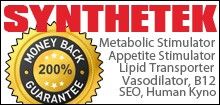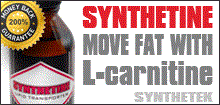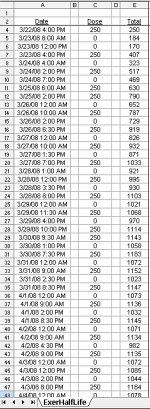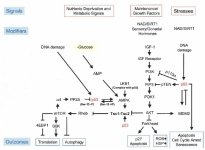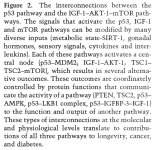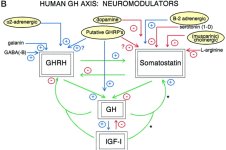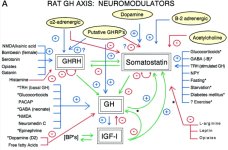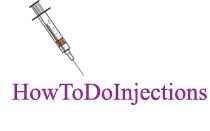kutch said:
My question was if it's ok to load a syringe with them mixed to be used about ~4 hours later? Kind of hard to bring vials and load a pin at work.
Yes. And it has been done by many for that very reason.
kutch said:
1. If insulin is produced to pull glucose out of the blood and store it as fat, then why do people/bodybuilders use it? I thought I also read it shuttles nutrients to the muscle, but now I'm not sure after reading some posts.
It is an indiscriminate storage hormone. It will do both. There are times when preferential treatment is evoked.
Primarily it prevents protein degradation & when coupled with GH which promotes protein synthesis, tissue can accrue.
Concerning the post-meal blood glucose wave it will take on different shapes and amplitudes based on the amount of "work"/glucose it needs to dispose and how resistant/sensitive tissue (both muscle & fat) is to insulin.
The blood glucose wave can have different amplitudes. For example 140ng/ml, 160ng/ml, 200ng/ml, etc.
The wave can have different durations. For example it can last for 45 minutes or an hour and 15 minutes or 2 hours.
The shape of the curve does not have to be bell shaped. Often activity can change the initial shape of the curve such as going for a post meal walk.
After exercise or following a meal when you are in a caloric deficit insulin is more apt to store nutrients in muscle then adipose tissue.
There is a subjective threshold above which insulin will have a "spill over" effect and store nutrients in adipose tissue. This threshold is comprised of both a blood glucose amplitude number and a duration number w/ the possibility for the shape of the curve to influence the outcome.
So for example if you have a blood glucose wave of 50 minutes duration that peaks at say 140ng/ml it maybe that most of those nutrients will be stored in muscle and not adipose tissue. If instead your dietary consumption drives blood glucose to 180ng/ml for an hour and a half you may have a lot of those nutrients stored in adipose tissue.
These numbers are very subjective. For me 140ng/ml is too high if I want to lose fat.
When we talked about glucose disposal agents we were in a way attempting to increase muscle sensitivity to insulin. In addition we are influencing the wave characteristics of blood glucose. These are probably two different ways to look at the same concept - Tissue sensitivity/resistance & glucose wave characteristics/spillover.
In caloric surpluses in a non-post work out environment you can not count on preferential disposal to muscle or use the specific wave numbers you determined when you dieted. But you can do things in an anabloic environment that skew things toward disposal in muscle and not adipose tissue. Steroid administration is one such thing which will influence nutrient disposal in favor of muscle.
kutch said:
2. Are there any bad side effects to changing to a low glycemic diet and keeping your blood sugar levels low? Is it possible to gain mass with a low glycemic diet? Finally, what is more important to losing fat...low calories or low blood sugar?
Have you ever had your bodyfat in the single digits...I mean true single digits measured in a water tank?
Bad side effects? Actually the bad side effects concerning insulin resistance, pre-diabetes, fat gain and poor cardiovascular health come from not controling you blood sugar levels.
Gain mass on a low glycemic diet? Sure. How much of an insulin spike do you think you need IF you are not using GH & steroids? The answer is the sugar you consume in your post-work out shake results in spill-over. Taking in oatmeal as your post work out carb would be just as effective with less fat gain.
The supplement industry has done a number on peoples heads. You don't need sugar & you don't need whey protein PWO. In fact they may even get in your way.
Having said all of that you are either losing bodyfat or gaining muscle. It is not possible to both at the same time.
Now some that are seriously in tune with their body might be able to do both within a small time frame by oscillating ...but they aren't doing it concurrently.
Take in the majority of your calories pre & post workout. Take in carbs (higher GI carbs even) during those times. Spend the rest of the day either eating to lose fat if you are on a diet or eating to gain mass if you are attempting to gain muscle.
Finally, what is more important to losing fat...low calories or low blood sugar? - Come on bro. The answer is glucagon. How are you going to make sure that is present and insulin is absent?
ERRATUM: The answer is really keep insulin from rising rather then driving into a deep glucagon response which will just end up dumping glucose into the bloodstream.




